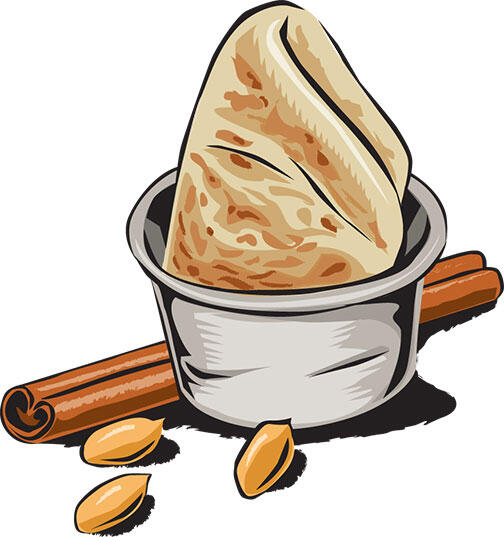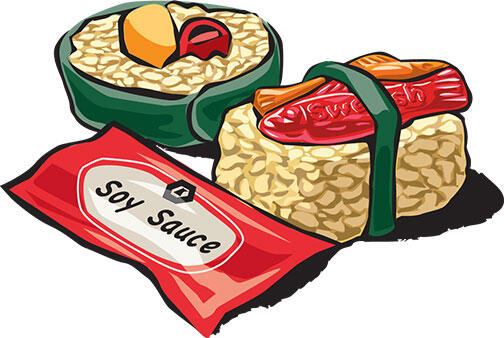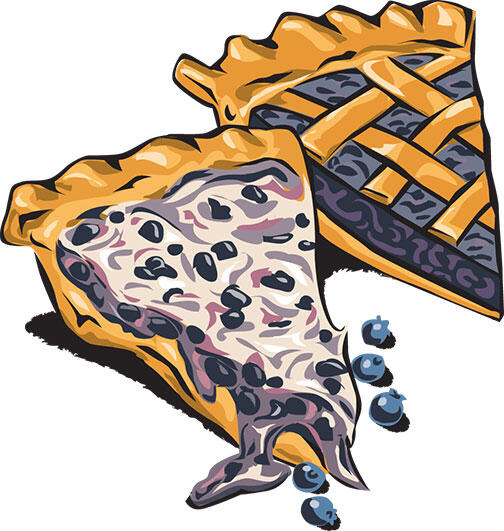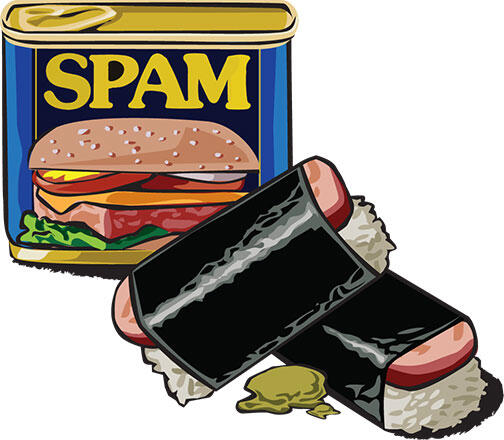As they worked on their Dean’s Date papers and studied for final exams, the 133 students enrolled in “Literature, Food, and the American Racial Diet” were faced with a different test: cooking. On April 30, the course held a “Princeton Feast” at Frist Campus Center, an event that required students to develop recipes based on their research into the relationship between food and America’s racial dynamic — and then prepare the dishes. The course, taught by Professor Anne Cheng ’85, encouraged students to think about a wide variety of social, cultural, and historical issues. Brian Geiger ’16, a frequent PAW contributor, sampled his way through the dishes and their respective cultural lessons.
Aileen Huang ’17, Namkyu Oh ’16, Milena Phan ’15, and Audrey Potts ’17
Ingredients: wheat flour, rice flour, water, yeast, salt, vegetable oil, sugar, brown sugar, peanuts, cinnamon
Acknowledging the pancake’s international character, the team made four pancakes — Chinese, Korean, Canadian/American, and Polish. PAW’s favorite was the hotteok, or sweet pancake, an autumn/winter Korean street food served freshly fried inside a paper cup or folded cardboard. Namkyu Oh’s difficulty finding hotteok served the way he remembers them as a child (on-the-go and without utensils) helps to keep the food strongly tied to the memories of his home in Seoul.
Garrit Leicht ’15, Kristen McNierney ’16, and Cecilia Shang ’18
Ingredients: Rice Krispies Treats, Airhead candy, Swedish Fish, cherry Twizzlers, strawberry Poppers, gummy worms, apple gummy rings, chocolate caramel balls
This team used the assignment as a chance to comment on cultural appropriation. By creating sushi rolls made out of candy, they attempted to demonstrate the ways in which Americans familiarize foreign cuisines to make them more comfortable, something that may occur at the risk of corrupting the essence of this Japanese food.
Mathilda Lloyd ’15, Po Wah Moon ’15, Janet Schirm ’15, Gabriela Villamor ’16, and Matthew Weber ’16
Ingredients: Flour, sugar, vegetable shortening, butter or margarine, vanilla extract, blueberries
This team took inspiration from professor emerita Toni Morrison’s novel The Bluest Eye, in which the protagonist believes that blue eyes represent beauty. To explore definitions of traditional beauty, the group baked two blueberry pies — one baked to perfection, the other featuring a surface that was a mess of blueberries — to see which pie students preferred. The results were somewhat reassuring: The traditionally baked blueberry pie was only a slight favorite.
David Exume ’18, April Liang ’15, and Jessica McLemore ’15
Ingredients: Spam, nori (roasted seaweed), rice, soy sauce, sugar
Musubi comes from the Japanese verb musubu, which means “to tie.” While musubi functions as a term for any food tied or wrapped in nori, it also evokes the way in which Spam ties together the Japanese-Hawaiian and American food heritages against the backdrop of World War II. Due to its substantial shelf life, Spam was a popular ration for soldiers. In Hawaii, a surplus of Spam rations led to the food finding its way into local kitchens, where Japanese-Americans turned it into an affordable wartime dish.















No responses yet